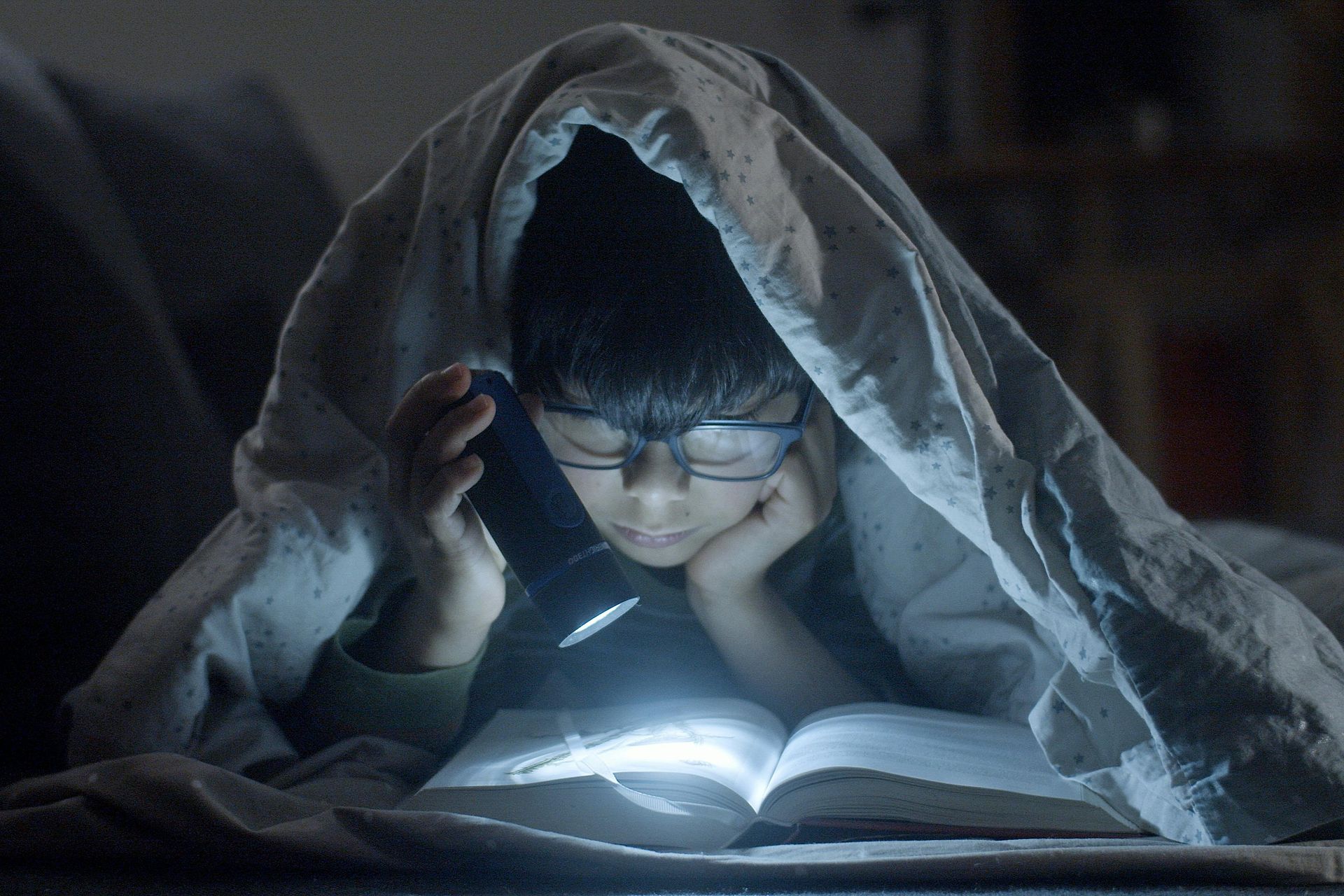Your Story Is Your Strategy: Why Small Businesses Win Big With Authentic Storytelling
Let's talk about small business success in 2025, shall we? Your website might be drop-dead gorgeous, your logo might be worthy of a design award, but if you're not telling a story that actually sticks in people's minds? You're basically having a one-sided conversation with the digital void while your competitors are out there building real relationships.
Here's what I see happening every day: business owners Google their industry, and they're not just hunting for another service provider. They're looking for someone who actually gets their world, their struggles, their midnight stress-dreams about quarterly numbers. In a marketplace where every scroll brings another cookie-cutter pitch, your story isn't just your differentiator anymore. It's your secret weapon, your ace in the hole, your "how did they know exactly what I needed to hear?" moment.
Why Your Brain Is Literally Wired for Stories (And Why Smart Businesses Feed That Craving)
Before we had conversion funnels and customer acquisition costs, we had something way more powerful: campfires and the stories shared around them. Before landing pages existed, humans were already passing down legends that lasted generations. And here's what most business owners completely miss: storytelling isn't some trendy marketing hack that'll be outdated next quarter. It's literally how our brains are built to process and remember information.
Want to know something fascinating? When someone hears a compelling story, their brain releases oxytocin. That's the exact same chemical that makes you trust your best friend and tear up at those viral dog rescue videos. Scientists call it the "bonding hormone," but I like to think of it as marketing magic in molecular form.
So what does this mean for your bottom line? When you share the real story behind your brand (not that sterile "About Us" page that sounds like it was written by a committee), you're not just sharing information. You're creating an actual neurochemical bond with potential customers. How's that for ROI?
Let me show you what I mean with a quick example:
The corporate approach: "We provide high-quality baked goods with over 20 years of industry experience and an unwavering commitment to excellence."
The story approach: "We started this bakery because my grandmother's cinnamon roll recipe was too ridiculously good to die with her. Honestly? Our kitchen at 2 AM still smells like her hugs, and sometimes I swear I can hear her laughing when the dough doesn't cooperate."
Which one makes you want to drive across town for a pastry? Which one would you tell your friend about? That's the gap between being just another business and becoming a brand people genuinely care about.
Craft Your Brand Story Like Your Business Growth Depends on It (Spoiler: It Does)
Every brand that actually matters started with a story worth telling. The real question is: what's yours, and are you brave enough to tell it authentically?
Here's where I see most small businesses completely fumble the ball. They think their story needs to be polished, perfect, and corporate-committee-approved. But here's the plot twist that'll save you thousands in marketing: perfect is forgettable. Perfect doesn't convert. Perfect gets scrolled past faster than your ex's engagement announcement on social media.
The stories that stick in people's minds? They've got texture, grit, and humanity. They include those 3 AM panic attacks when you wondered if you'd made a huge mistake. The breakthrough moments that happened in the shower (why is it always the shower?). The epic failures that somehow became your biggest competitive advantages. They're messy, human, and absolutely magnetic to the right people.
Your story needs these essential ingredients:
- The problem you couldn't ignore, even when everyone said you should just let it go
- That pivotal moment when you decided to actually do something about it
- The obstacles that nearly broke you but somehow made you stronger (we love a good underdog story)
- Why you're still here, still fighting the good fight when quitting would've been easier
Don't just tell people what you do; help them understand why you couldn't possibly do anything else. When your passion becomes genuinely contagious, that's when browsers transform into buyers. It's when "just looking" becomes "where do I sign?"
And please, for the love of all that's profitable, make it relatable. Your customers don't need another hero's journey; they need to see themselves reflected in your struggle. When your midnight doubts mirror their midnight doubts, when your small wins feel like their victories, that's when real magic happens in business.
Turn Happy Customers Into Your Most Powerful (And Unpaid) Marketing Team
Customer testimonials are like having a sales force that works around the clock, never calls in sick, and genuinely loves what they're selling. But here's what drives me nuts: most businesses treat testimonials like participation trophies. Generic, bland, and about as memorable as yesterday's weather report.
Here's the secret sauce that changes everything: the best testimonials aren't really testimonials at all. They're transformation stories, and they're pure gold for your marketing.
Instead of collecting those vanilla five-star reviews that say "Great service, would recommend," dig deeper with questions that actually matter:
- What was keeping you up at night before you found us?
- What was that exact moment when you realized we were different from everyone else?
- How did working with us change your daily reality? (Be specific!)
Pro tip that'll double your response rate: Ask for these stories right after you've delivered something amazing, not six months later when the emotional high has completely faded. Strike while the gratitude is hot and the details are crystal clear in their minds.
Then, showcase these stories everywhere. Not buried on some testimonials page that nobody visits, but woven into your product descriptions, sprinkled throughout your social media, and featured in case studies that actually tell a story worth reading. Make them work harder than a double shot of espresso on a Monday morning.
Social Media: Where Your Story Finally Gets Wings (And Maybe Goes Viral)
Social media isn't a megaphone for broadcasting at people; it's more like hosting a dinner party where everyone actually wants to be there. The brands that win are the ones who show up like that friend everyone loves hanging out with, not the person who only talks about their latest MLM venture.
Choose your platforms like you'd choose your dinner party guests: thoughtfully and with clear strategic intent.
- Instagram thrives on visual storytelling and those perfectly imperfect behind-the-scenes moments
- LinkedIn loves professional wins and thought leadership that actually leads somewhere meaningful
- TikTok rewards creativity and authenticity (sometimes wrapped up in the same 15-second masterpiece)
The real magic happens when you stop trying to sound like a Brand™ and start acting like an actual human being with opinions, quirks, and occasional bad hair days. Share the authentic stuff that makes people feel connected:
- The 5 AM coffee ritual that fuels your best creative ideas
- That client win that had you doing a victory dance in your office
- The mistake that taught you everything you needed to know about customer service
Remember this golden rule: consistency trumps perfection every single time. Show up regularly, show up authentically, and watch your audience evolve from casual followers to genuine cheerleaders who actually buy from you.
Blog Like You Actually Have Something Interesting to Say
Your blog isn't just a place to dump keywords and pray Google notices (though SEO definitely matters). Think of it as your brand's living room; the cozy space where deeper conversations happen and real relationships begin to form.
Every blog post is an invitation into your world. Use this precious real estate for the stories that don't fit in a social media caption:
- The behind-the-scenes journey of your latest product launch (including the parts that didn't go according to plan)
- The customer whose unique challenge completely changed how you approach your work
- The industry trend that keeps you up at night and what you're actually doing about it
Yes, SEO matters, but soul matters infinitely more. Research your keywords, optimize those headers, but never sacrifice authenticity for search rankings. Google's getting smarter every day, and it rewards content that people actually want to read, share, and bookmark for later.
End every post with a question that practically begs for engagement. Turn your blog from a one-way broadcast into a genuine two-way conversation. The comments section should feel like the best part of your content, not some forgotten afterthought that collects digital dust.
Video: Where Your Stories Come to Life (No Film Degree Required)
If a picture tells a thousand words, video is like having an entire library at your disposal. But here's where most small businesses get it completely wrong: they think video needs to be expensive, Hollywood-polished, and absolutely perfect.
Nope, nope, and nope.
The videos that actually convert are the ones that feel real, unscripted, and genuinely human. Show your process, introduce your team, let people see the actual humans behind the logo. Authenticity beats production value every single time.
Video storytelling that actually works (and doesn't break the bank):
- Behind-the-scenes glimpses of your daily hustle (the real stuff, not the highlight reel)
- Customer success stories told in their own words (with their enthusiastic permission, obviously)
- Quick tutorials that solve real problems people actually have
- "Day in the life" content that humanizes your brand and makes you relatable
You don't need a film crew or a fancy studio setup. You need authenticity, decent lighting, and something genuinely interesting to share. Your phone camera is perfectly fine; your passion and expertise are what people will remember long after the video ends.
Measure What Actually Matters (Then Adjust Like Your Business Depends on It)
Story-driven marketing is incredibly powerful, but only if you're paying attention to what's actually working versus what you think should work. (There's often a surprising gap between the two.)
Track engagement like it's your business GPS guiding you to profitability:
- Which stories generate the most genuine comments and shares (not just likes)?
- What content drives qualified traffic to your website that actually converts?
- Which posts make people slide into your DMs with real business inquiries?
But don't just count likes and clicks like they're Monopoly money. Pay attention to the qualitative feedback that really matters:
- Are people referencing your brand story when they talk about you to others?
- Do they mention your values and mission in their reviews and testimonials?
- Are they sharing your content because it genuinely resonates, not just because you asked nicely?
Use these insights to double down on what's working and ruthlessly cut what isn't. Your story should evolve with your audience's preferences, not stay stuck in what you think should resonate based on outdated assumptions.
Build Community, Not Just a Customer Database
The brands that win long-term don't just tell their own stories; they create space for their customers to tell theirs too. It's the difference between being a performer and being a host.
Launch campaigns that invite genuine participation and make people feel seen:
- Feature customer transformation stories (with their enthusiastic permission and proper attribution)
- Create hashtags that encourage authentic user-generated content
- Showcase real customers in your marketing materials (not just stock photos of impossibly perfect people)
When people see themselves reflected in your brand story, something beautiful happens. They don't just buy from you; they become advocates, ambassadors, and the kind of word-of-mouth marketing that money literally cannot buy. They become part of your story's next chapter.
The Bottom Line: Your Story IS Your Strategy
In a marketplace where everyone's shouting about features, benefits, and why they're the "best choice," the brands that whisper authentic stories are the ones people actually lean in to hear.
Your story isn't just marketing fluff or some nice-to-have addition to your strategy. It's your competitive advantage wrapped in authenticity. It's what transforms random browsers into loyal buyers, one-time customers into community members, and simple transactions into lasting relationships that fuel sustainable growth.
So here's my challenge to you: stop hiding behind corporate speak and generic messaging that sounds like it was generated by AI. Your story; the real one, complete with all its messy, human, beautiful details; is exactly what your ideal customers have been waiting to discover.
Start telling it today. Your business is literally counting on it.
Ready to transform your story into your most powerful business strategy? Let's explore how authentic storytelling can take your brand from forgettable to absolutely unforgettable.









